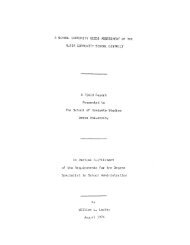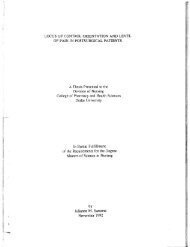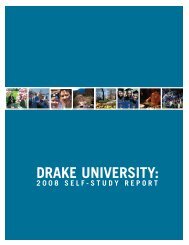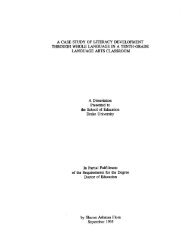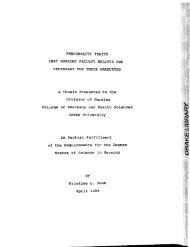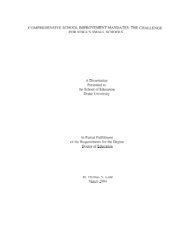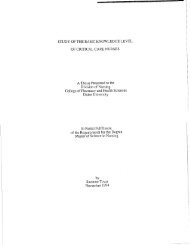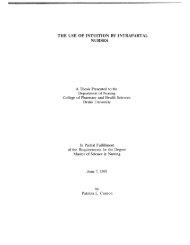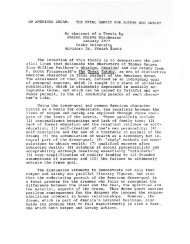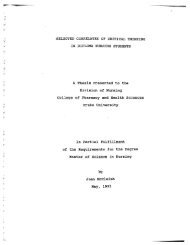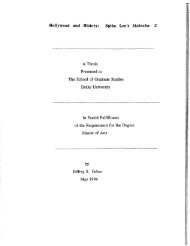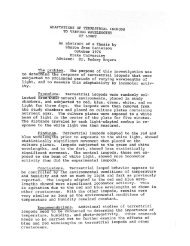LEADERSHIP CHARACTERISTICS OF ... - Drake University
LEADERSHIP CHARACTERISTICS OF ... - Drake University
LEADERSHIP CHARACTERISTICS OF ... - Drake University
Create successful ePaper yourself
Turn your PDF publications into a flip-book with our unique Google optimized e-Paper software.
transformational factors correlate with the transactional and laissez-faire<br />
factors, suggesting they are not unique to the transformational model<br />
(Tejeda et al., 2001 ; Tracey & Hinkin, 1998). Nevertheless, the MLQ<br />
appears to be the standard for measuring leadership style.<br />
The MLQ was used to measure nine profile areas, clustered into three<br />
segments. These segments and profile areas include:<br />
1 ) Transformational Leadership (consisting of five domains)<br />
a. IA - idealized attributes. Leader instills pride in others, goes<br />
beyond self-interest for the good of the group and displays a<br />
sense of power and self-confidence.<br />
b. IB - idealized behaviors. Leader provides others with a clear<br />
sense of purpose and vision, serves as a role model for ethical<br />
behavior and trust building<br />
c. lM - inspirational motivation. Leader communicates high<br />
expectation of followers, inspiring them to become committed to<br />
the organization's shared vision; tries to make others feel their<br />
work is significant.<br />
d. IS - intellectual stimulation. Leader stimulates followers to be<br />
creative and innovative, to challenge their own beliefs and<br />
values as well as those of the leader and the organization.<br />
e. IC - individualized consideration. Leader provides a supportive<br />
climate in which leaders listen carefully to the individual needs



